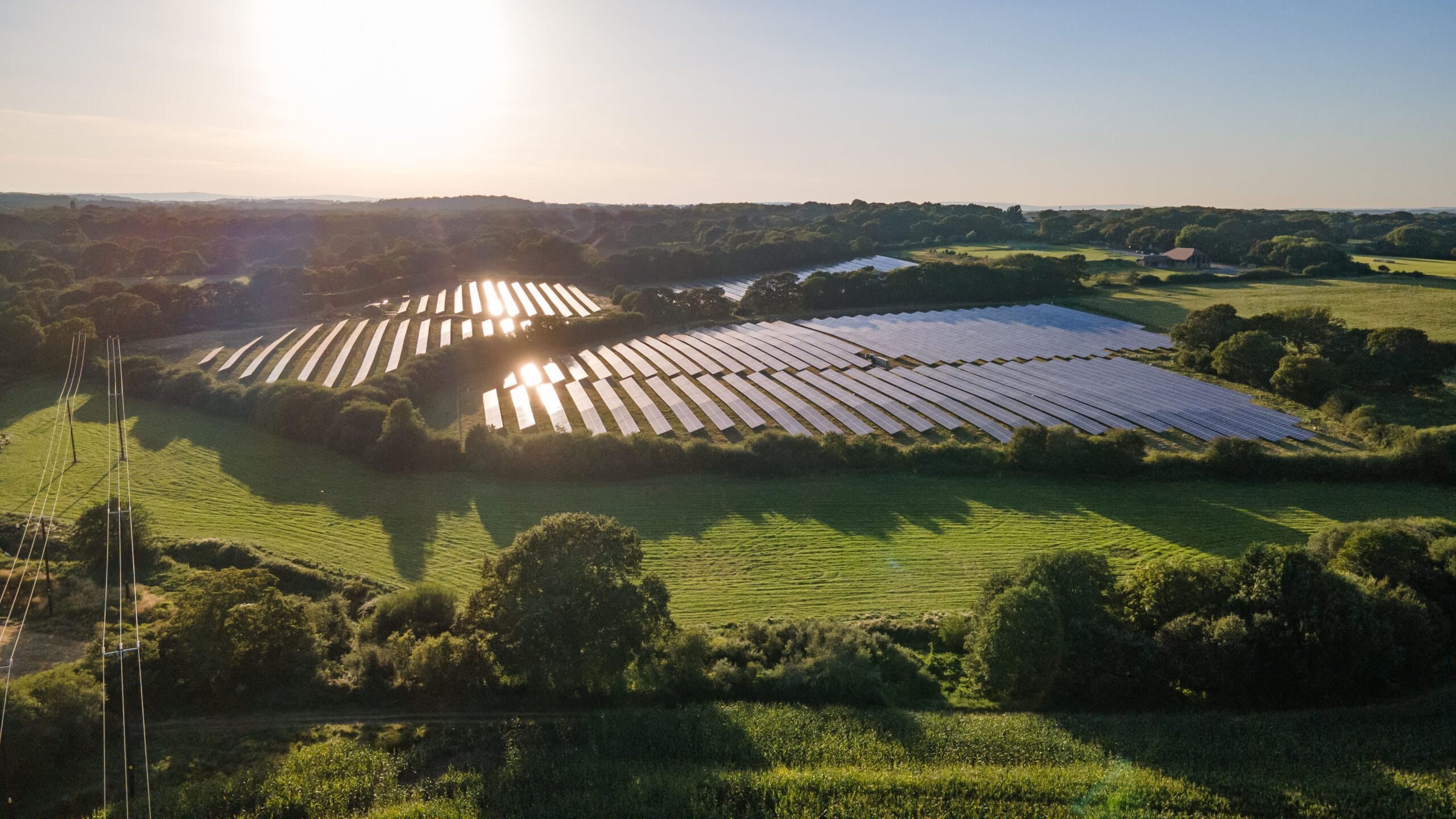Transport planning for solar farm installations
KEY FACTS
Anesco Limited is on a mission to accelerate the transition to a sustainable, low-carbon future. To date, the company has designed and constructed 111 solar farms and 33 large-scale energy storage facilities, generating over 774MW of clean energy. With a healthy pipeline of opportunities, the company manages and monitors 1.42GW of energy across 25,819 renewable assets, providing end-to-end lifecycle services. Since its creation in 2010, the company has also alleviated more than 350,000 people out of fuel poverty through the Energy Company Obligation, a government scheme to deliver energy efficiency improvements to homes across Great Britain.
Anesco enjoys a 100 per cent record in steering applications through the planning system to build solar farms and battery storage facilities around the UK. In part, this is due to the high level of detail and rigorous application at every stage of the process. Partnerships with experienced and trusted advisors are critical to ensure the company is best placed to maximise each opportunity. Navigating the political and technical complexities requires an intimate knowledge of the local and national policy context, and a deep understanding of the ecology, flood-risk and transport issues.
Steering proposals
Motion has been engaged by Anesco Limited for the past five years. Low Farm in Skegness, Lincolnshire, is an example of the transport planning and construction management support that has contributed to the company’s planning application success rate. Construction began in November 2022 and, once built, the farm is on course to deliver key environmental and societal benefits.
The installation will generate clean energy to power 13,500 homes and will save 12,000 tonnes of carbon per year. Not only will the facility contribute towards a net-zero UK economy, it will also enhance local ecology and could result in biodiversity net gains of more than 130 per cent.
Net-zero drive
 According to Motion Director, John Russell, “There has been a massive uplift in the volume of solar farm installations during the past two years, as the drive towards net zero has intensified. But while this suggests the planning environment may be more favourable for renewable projects, the highways and transportation arguments in support of solar farms need to be increasingly robust to address opposition in some parts of the country.”
According to Motion Director, John Russell, “There has been a massive uplift in the volume of solar farm installations during the past two years, as the drive towards net zero has intensified. But while this suggests the planning environment may be more favourable for renewable projects, the highways and transportation arguments in support of solar farms need to be increasingly robust to address opposition in some parts of the country.”
Laura Murphy, Senior Project Developer at Anesco, agrees. “Despite the shift in planning attitudes to ward schemes that help the greater good, often the challenge from a transport perspective centres on the detail concerning visibility splays, on-site turning, CrashMap data and construction vehicle routes.”
Demonstrating suitability and sustainability
Motion Transport Planner, Andrew Nock, explains, “Both temporary access for larger vehicles and the site’s permanent access arrangements can present obstacles that need to be addressed as early as possible.” Since solar farms typically take 30 to 40 weeks to build, the crux of the argument in communities often centres on the movement of vehicles to and from site during the construction phase, and capacity of the local road network to accommodate the resulting additional heavy vehicle traffic.
typically take 30 to 40 weeks to build, the crux of the argument in communities often centres on the movement of vehicles to and from site during the construction phase, and capacity of the local road network to accommodate the resulting additional heavy vehicle traffic.
Critical to the project outcome is skill in building data-driven arguments to allay local concerns and demonstrate a scheme’s suitability and sustainability to the planning authorities. Laura Murphy concludes, “The Motion team supports us with provision of expert knowledge and timely advice, with access to an impressive network of local authority contacts. The company is quick to turn things around and takes the stress away from us.”
Low Farm project at a glance:
- 50MW solar farm
- 60-hectare site
- 13,500 new homes powered by clean energy
- 12,000 tonnes of carbon emissions saved annually
- Supports local authority’s carbon reduction plan
- Biodiversity net gains of more than 130%
Motion contribution:
- Preparation of transport statement
- Access advice
- Swept path analysis
- Assessment of junction visibility
- Analysis of traffic impact and mitigation – during and after construction phase
Outcome:
New, non-carbon energy generating facilities, at a location safely accessed by construction and operational vehicles with de minimus temporary traffic impact
Construction of Low Farm in Skegness will be completed at the end of 2023
“The Motion team supports us with provision of expert knowledge and timely advice, with access to an impressive network of local authority contacts. The company is quick to turn things around and takes the stress away from us.”
Laura Murphy, Senior Project Developer at Anesco
Image credit: © Photograph courtesy of Anesco



